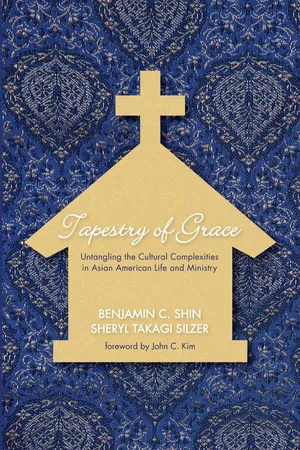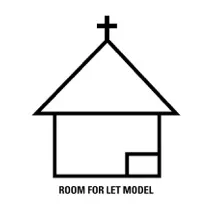![]()
Section 1
The Tangled Cultural Complexities in the Asian American Church
In this book we are seeking to close the generation gap between the more traditional immigrant Asian church and succeeding generations of Asian American Christians in order for both groups to experience God’s grace. We hope and pray that better understanding and cooperation will result in reversing the trend of the “silent exodus” that has been affecting Asian and Asian American churches significantly for the last thirty years. This section will deal with a number of important questions facing the Asian American church today: Why does the first-generation Asian church do what they do? Why is relationship so important for Asians, especially within the family and the church? Why is there so much conflict between the two generations? Many of the answers to these and other questions lie within a greater understanding of Asian culture.
Our hope and prayer for you is that you will see the “other side” of these issues and have a greater understanding of and even an appreciation for a people and culture that is different from yours. Again, the issue here is not a difference necessarily between right and wrong but simply of differences in style and culture. Many of these issues are not a moral issue, but rather a cultural one. Ephesians 4:3 sums up our goal together for the church, no matter what side or generation you are a part of. Paul encourages believers to be “eager to maintain the unity of the Spirit in the bond of peace.” May this be the prayer for yourself and your church to the glory of God.
In chapter 1 Ben describes the different church models that Asian Americans have developed to address the growing chasm between the first generation and succeeding generations mainly based on language difference (Asian versus English language). Chapter 2 reveals how the concept of shame in Asian cultures has impacted social interaction and how it compares not only with the biblical concept of shame but also with the life of the first-century Christians. Chapter 3 describes how the concept of grace of the first-century church is similar to some aspects of Asian culture, being built on reciprocity, in contrast to a more Western unilateral concept of grace. A comparison of Asian reciprocity with biblical grace further clarifies what our relationship with God should look like. In chapter 4 Ben explains a major struggle of the second-generation church leaders: that is, should they stay in the immigrant church or should they plant a church? In chapter 5 Ben describes how spirituality is shaped and influenced by Asian cultural values. He compares some of the similarities and differences between Korean and Chinese spirituality.
![]()
1
Got Church?
Introduction
Over the years, Asian Americans have chosen to attend a number of new types of churches which have emerged in the U.S. No longer is it as simple as just finding an Asian immigrant church somewhere in a city. Rather, many different models of church are now frequented by Asian American Christians all throughout the U.S. This chapter gives an overview of these different church models, describes some of their strengths and challenges, and offers insights into why different models are preferred over others. Credit must be given to Dr. Hoover Wong, who originally came up with a number of church models in the chapter called “Church Models for Mission” in his book Coming Together or Coming Apart? I (Ben) have updated, changed, and added other church models to his work in light of more recent developments.
The Biblical Basis for Church
So what is the biblical basis for the local church in the Scriptures? Surprisingly, the nature of the church in the Bible is more universal than localized. While many new models and kinds of churches have arisen over the years, including the seeker-sensitive church, the emergent church, the house church, and the megachurch, the term ekklesia in the New Testament is more often referred to in its universal scope rather than in its local use. Dr. Robert Saucy, in his book The Church in God’s Program, writes that, “the concept of a physical assembly gives way to the spiritual unity of all believers in Christ. Ekklesia is this sense is not the assembly itself but rather those constituting it; they are the church whether actually assembled or not.” He points to the universal church throughout the New Testament in such passages as Matt 16:18; Acts 8:3, 9:31; 1 Cor 12:28, 15:9; Eph 1:22–23; and Col 1:18. While the universality of the church is strongly supported in the Scripture, Millard Erickson adds another dimension concerning the local church in his book on systematic theology: “. . . while it is universal in nature, it finds expression in local groupings of believers which display the same qualities as does the body of Christ as a whole.”
The central question then to this whole issue should not be “should I go to church or not, but rather which kind of church should I be a part of as a congregation member?” The choices are numerous and probably still increasing in the future. This next section will highlight the nine different types of church models that Asian Americans have been attending, serving in, and being a part of over the years.
Nine Church Models Asian Americans Attend
The following nine church models represent a variety of approaches which are being used within the Asian American Christian setting. Each model includes positive and negative aspects that must be considered.
1) The Room-for-Let Model
The Room-for-Let designation was termed by Dr. Hoover Wong to describe a small segment or room within an immigrant church which was devoted to English-speaking church members. These members could be part of a youth group or a college group led by an English-speaking second-generation pastor or sometimes even by an outsourced Caucasian pastor based on his English language proficiency. This model is by far the most common model found across America for Asian Americans.
The need for the Room-for-Let model of church arose when the children of the parents in an immigrant church needed a place to worship in English because they could not understand or relate to the main service that is often conducted in the Asian language spoken by the first-generation church members. For this reason, the Room-for-Let model is used to keep the children in the church so as to prevent them from leaving to go to another church. Wong writes, “This is the boarding-house approach, as space is set aside for those who are alien to the root culture and language. It is a holding action concerning the youth. Defection is delayed.”
While the Room-for-Let model may seem like a good immediate solution for the church and its need, it is at best only a short-term solution. Eventually, the children will get older and, if they stay in the church, will get married and have their own families. Typically, families will want to be with other families. Peers of the same life stage enjoy being with each other. Thus, the small Room-for-Let will not be sufficient to meet the different needs of the family members when different ages and stages of family emerge. At that point, greater attention and resources need to be provided for the English speakers or else they may look for another church that could better accommodate the needs of their families.
The strength of the Room-for-Let model is only a short-term advantage. It keeps the family unit together at the same church site temporarily, and generations can be more intimate because people from different generations will know each other well. This model will have a strong family feel to it. But at the same time, due to the normally small size of a congregation, everyone in the church needs to serve. A lack of resources is often a huge issue in the Room-for-Let model. Because the congregation is typically small, the same workers serve for a very long time. This can often lead to fatigue and sometimes even burnout. Another issue is that many of these workers are not fed spiritually and feel the strain of serving without the benefit of personal growth. These are but a few of the many plights that small church congregations face.
2) The Duplex Model
This next model, the Duplex, is an upgrade from the Room to Let model. It is often the result of the members from the Room-for-Let model just getting older, more mature, more numerous, and financially stronger. The basic structure of the Duplex model is two different congregations: an English-speaking one and an immigrant church that speaks the mother tongue. The two groups co-exist next to each other, but are under one leadership. If the denomination is Presbyterian, both congregations would be under the elders, for example. Or, if the church is part of a Baptist denomination, then both congregations would be under a board of deacons. Either way, every decision, especially of budgetary nature, goes through the leadership of the first-generation immigrant church.
The advantages of the Duplex model are numerous. One of the biggest advantages for the Duplex model is that it again keeps the English speakers (English Ministry or EM) and the immigrant first-generation members (Korean Ministry or KM) on the same campus. For a culture that strongly values a collect...


